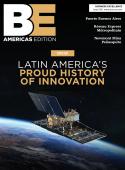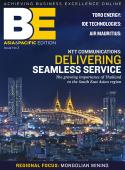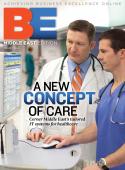Smart growth┬áWith student enrollment growing as much as 30 percent in some recent years, the Frisco Independent School District has undertaken an aggressive long-term building plan to meet the need for new educational and support space, Keith Regan learns. Located 30 miles north of Dallas, Texas, the Frisco Independent School District has been one of the fastest growing in the United States over the past decade, with 30 percent enrollment spikes in some recent years. Even as the economy has slowed, growth has remained in the double-digit range. Over the past 11 years, the district has grown from one that served fewer than 4,000 students to one that now services 30,000 students in kindergarten through 12th grade and is projected to serve some 52,000 by the year 2030. To address that rising demand, the district has used a series of bond issues to build new school space across its district, which covers Collin and Denton Counties. A 2003 bond program contained nearly $500 million for school building projects, and the most recent bond program, approved in 2006, includes an additional $798 million for school construction. The current batch of building projects under way within the Frisco district includes two new high schools, each with a price tag of about $75 million and both scheduled to open in the fall of 2009; three middle schools, all set to be done in August 2010; and four elementary schools, one traditional to be done in August 2009, along with an early childhood school and the others to come online the following year. Just opened in the fall of 2008 were a $35 million career and technical education center, two elementary schools, two middle schools, a service center for support areas and a satellite transportation hub. Richard Wilkinson, assistant superintendent for facilities and finance, facility planner for the district, says that having such a large number of projects in the pipeline has helped to ensure contractor interest, which in turn has helped keep bids competitive. ÔÇ£Because the contractors are aware that there are significant opportunities in Frisco, we regularly have 10 to 12 or more firms bidding on our projects, even the smaller ones,ÔÇØ Wilkinson adds. In fact, one elementary building project attracted 16 qualified and quality bidders. ÔÇ£They want to do business with us because they know we have a significant amount of work still ahead of us, and they know they have to come in at a competitive price while maintaining the highest quality.ÔÇØIn order to help the district address its space needs, projects also must be kept on strict timelines. Many are slated to be completed in the months of June and July, which gives the district only a few weeks to do significant finishing work, says Cecil Cypert, director of construction services. Once buildings are completed, the district needs time to furnish them and outfit them with technology and other infrastructure in order to have the buildings ready when school resumes in August. Also helping to keep things moving forward is the use of prototype designs for some of the schools. Prototype designs are used for middle and elementary schools, yielding savings of as much as three percent on architectural fees on each project and streamlining the process as well. A handful of schools may be built before the school board revisits design with changing programs in mind. In one case a single basic elementary school design was used nine times across the district, with the look of the schools varied by orienting them differently on the sites. Although high schools are designed individually, the same architecture firm has designed the last four such buildings. ÔÇ£Their familiarity with our programs saves us money as well,ÔÇØ Wilkinson says.┬á Wilkinson credits Cypert, a former project manager for a contracting firm, and his four-person oversight team with effectively managing the bevy of projectsÔÇöwith about $200 million worth of construction being undertaken during busy yearsÔÇöto keep them on time and on budget. Project supervisors from CypertÔÇÖs team keep close tabs on the project, and the district can search for solutions when delays or other unexpected problems arise. That coordination becomes increasingly important as projects near completion and the district must prepare to get the schools ready for students. For his part, Cypert says strong relationships with architects and contractors make the projects happen. ÔÇ£We would not be successful without good architects and contractors,ÔÇØ he says. ÔÇ£WeÔÇÖre constantly talking with them about how we can improve the way things are being done.ÔÇØ The district has also taken a partnership approach with the cities that have jurisdiction over its permitting, working to expedite when possible and helping to work jointly on some projects, such as a stadium project that the district helped fund and the city will maintain. Although Frisco has chosen not to pursue LEED accreditation for its building projects, it has nonetheless designed and constructed them to meet many of the minimum criteria for certification. The district has also taken a leadership position in adopting geothermal energy systems on many of its building sites, using the approach since 2004. ÔÇ£WeÔÇÖve learned a lot about proper installation techniques over the years,ÔÇØ says Cypert. One recent high school project had about 1,000 geothermal wells drilled around the campus, all of which had to be connected and distributed to individual heat pumps within the building. ÔÇ£ItÔÇÖs a lot of work on the front end in terms of drilling and coordination. There are critical on-site logistics to take into account in terms of site work and earth moving, but for us it has proven well worth it because weÔÇÖve seen on average about a 30 percent energy cost savings.ÔÇØ The slowing economy hasnÔÇÖt changed the bottom line for the district. ÔÇ£WeÔÇÖre constantly looking at our projections and matching that up with our program, but we know weÔÇÖre going to need the space in the long run,ÔÇØ says Wilkinson. ÔÇ£WeÔÇÖre going to need the space for our students, and our focus is on getting it built in the most economical and efficient manner possible.ÔÇØ ÔÇô Editorial research by Dan Finn┬á









